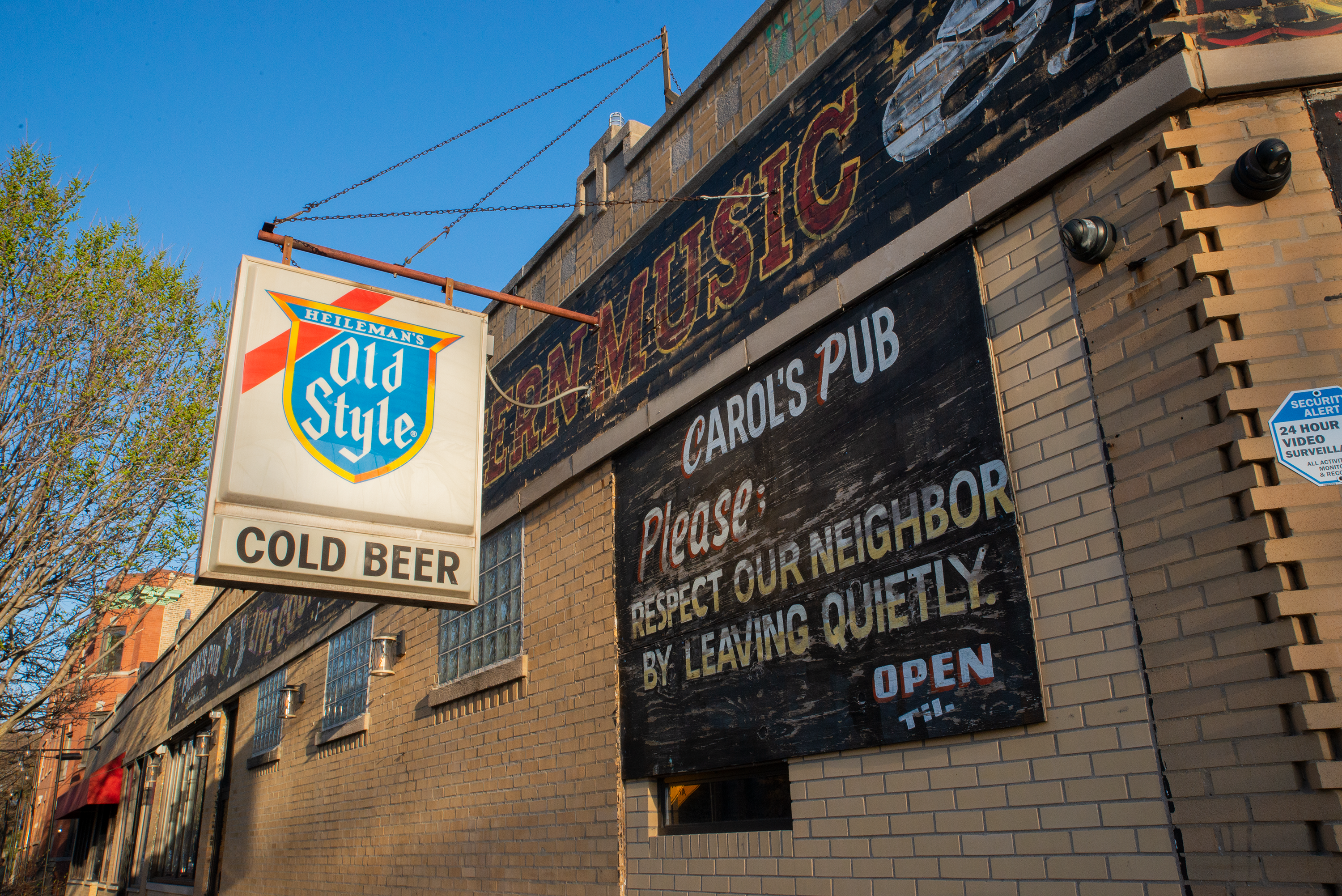The city that works needs places to play. Even before Chicago was a big city, its drinking establishments served as oases for the tired, thirsty and lonely alike.
On April 12, Curious City hosted a night of beer, honky-tonk and Chicago bar history at the iconic Carol’s Pub in Uptown.
Our guests for the evening were writer Robert Loerzel — who reported one of our favorite Curious City stories, about the history of Uptown’s nightlife and entertainment scene — and Liz Garibay, founder and executive director of the Chicago Brewseum.
Between a few Chicago Handshakes and Chicago-style hotdogs, here’s what we learned:

Chicago officially became a city at a bar: That’s right. Back in 1833, people who were decision-makers in Chicago’s nascent years got together to decide what they should do about the growing community around them. Naturally, they went to the Sauganash Tavern, a local saloon, threw back a few whiskeys and got “nice and loopy like a proper Chicagoan about to make an important decision,” Liz said. It was then and there that they voted to turn the village into a township. Four years later, they went back to the same tavern and voted again — this time, to turn the township into a city.
Some of the earliest bars in Uptown were “cemetery saloons”: In the mid-1800s, people left the city to bury their dead at places like Graceland or St. Boniface Cemetery, which at the time were well beyond city limits. It was a bit of a hike, and according to Robert, after a day of mourning, people went looking for a drink. Roadhouses popped up nearby. The most famous one, Robert said, was the Sunnyside — located right on the edge of Graceland Cemetery. According to the Chicago Inter Ocean newspaper, “There were hot words and hard fights” at this particular “cemetery saloon,” as the joints were then known.
The first riot in Chicago was over beer: In the 1840s and ’50s, there were lots of immigrants in Chicago who were involved in the local brewing industry. When Levi Boone, a local politician who was a member of the Know Nothing party, decided to outlaw drinking on Sundays, people weren’t having it. Different immigrant groups came together — even though most of them didn’t speak a common language — and decided to organize, Liz said. They stormed City Hall and chaos ensued. But the end result was that drinking remained legal on Sundays and “the good guys ended up winning,” Liz said.
A lot of what we know about the history of the Green Mill is wrong: Before it became the Green Mill, Chicago’s famous jazz club was a saloon run by a guy called Charles “Pops” Morse. While lots of books say it opened in 1907, Robert found a building permit for the roadhouse dated 10 years earlier. In those days, it served up corned beef and cabbage to Irish immigrants on their way to Calvary Cemetery, and was also a place where prizefighting boxers trained. But the stories about Al Capone hanging out there in the 1920s may not be true. According to Robert, the Green Mill Gardens, as the bar was then known, was controlled — like most North Side bars at the time — by Capone’s enemies.
Old Style and Malort are a match made in… marketing savvy: When it comes to drinks associated with a particular city, New Orleans has the Sazerac, New York’s got the Manhattan and Chicago has the Chicago Handshake: a shot and a beer as a chaser. But for a long time, any old beer and a shot would do. That’s in part because, though Chicago’s always had plenty of breweries, the city never really had a national beer brand in the way places like Milwaukee or St. Louis did. “We were drinking all our beer,” Liz said, “so there was never really a need to export.” Eventually, the companies that make Malort and Old Style decided to lay claim to the Chicago Handshake. But that was nothing more than good old-fashioned “marketing savvy,” Liz said — cashing in on something that was already well established as Chicago’s drink.
When it comes to drinking buddies, our needs are simple: We put out a survey during the event asking people what they most look for in a friend to go out drinking with. Just about 40 people responded, and it turns out things like being an extrovert or having the ability to drink a lot weren’t top priorities. The most important attribute? Always being available. Cheers to that.


